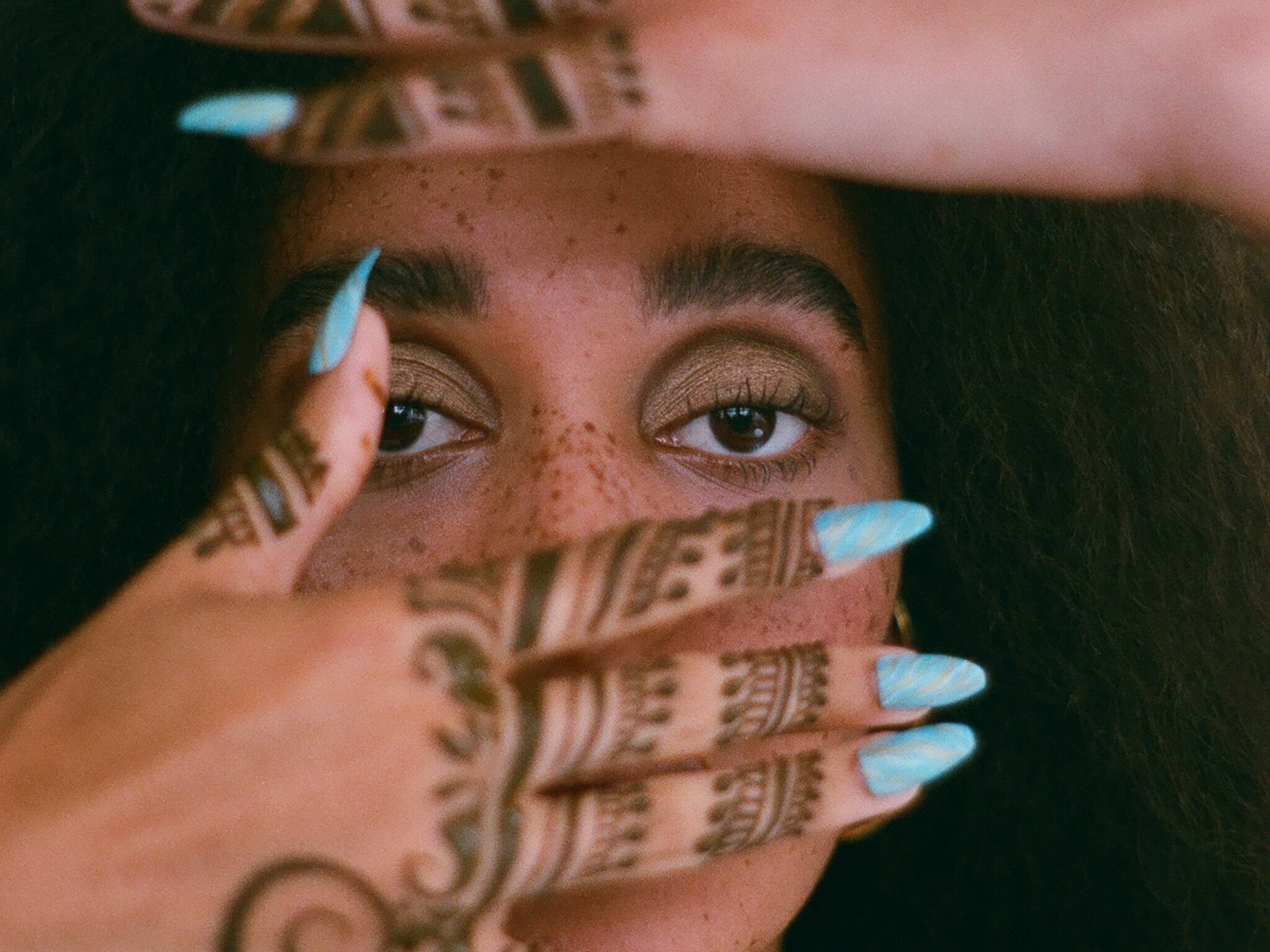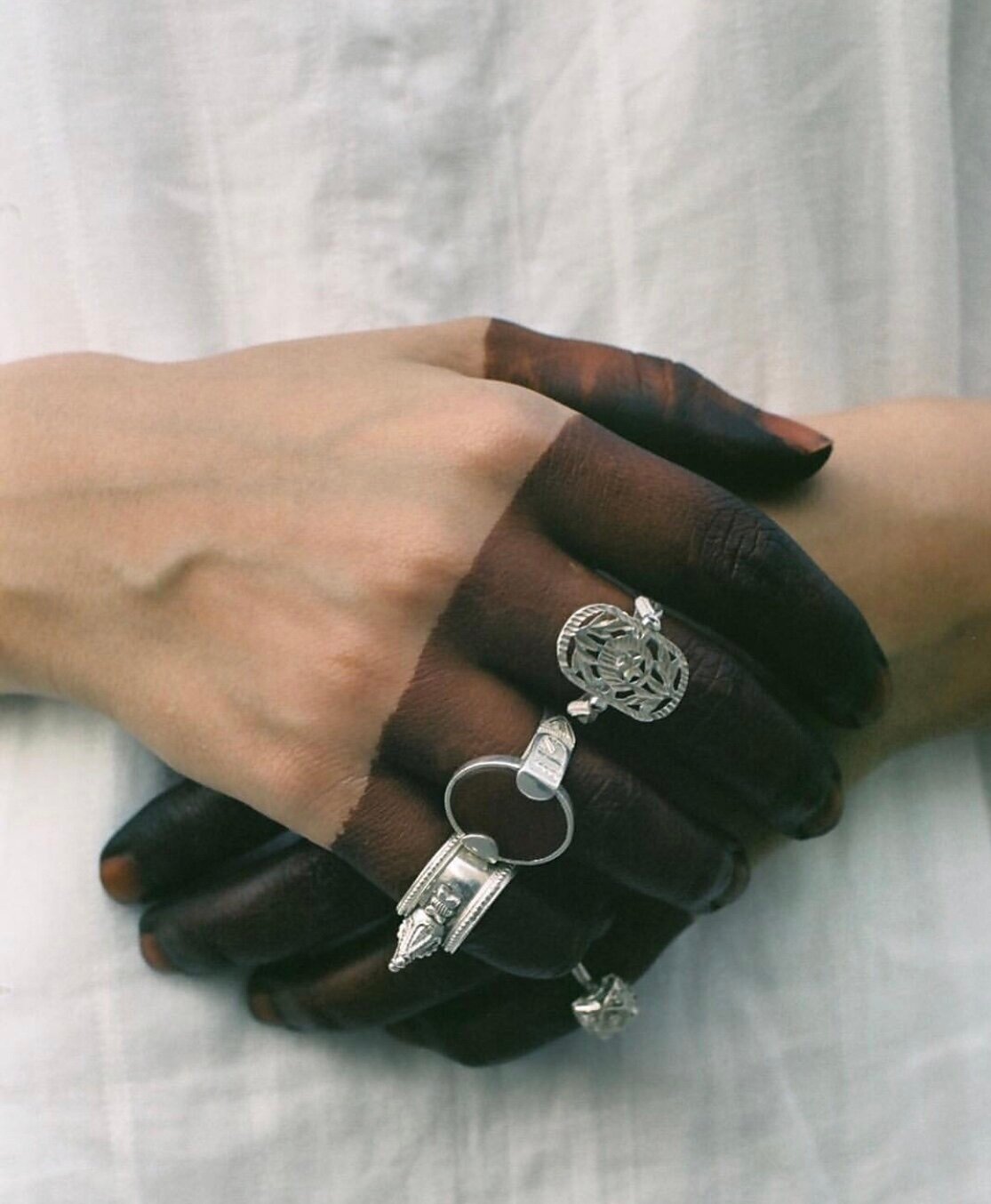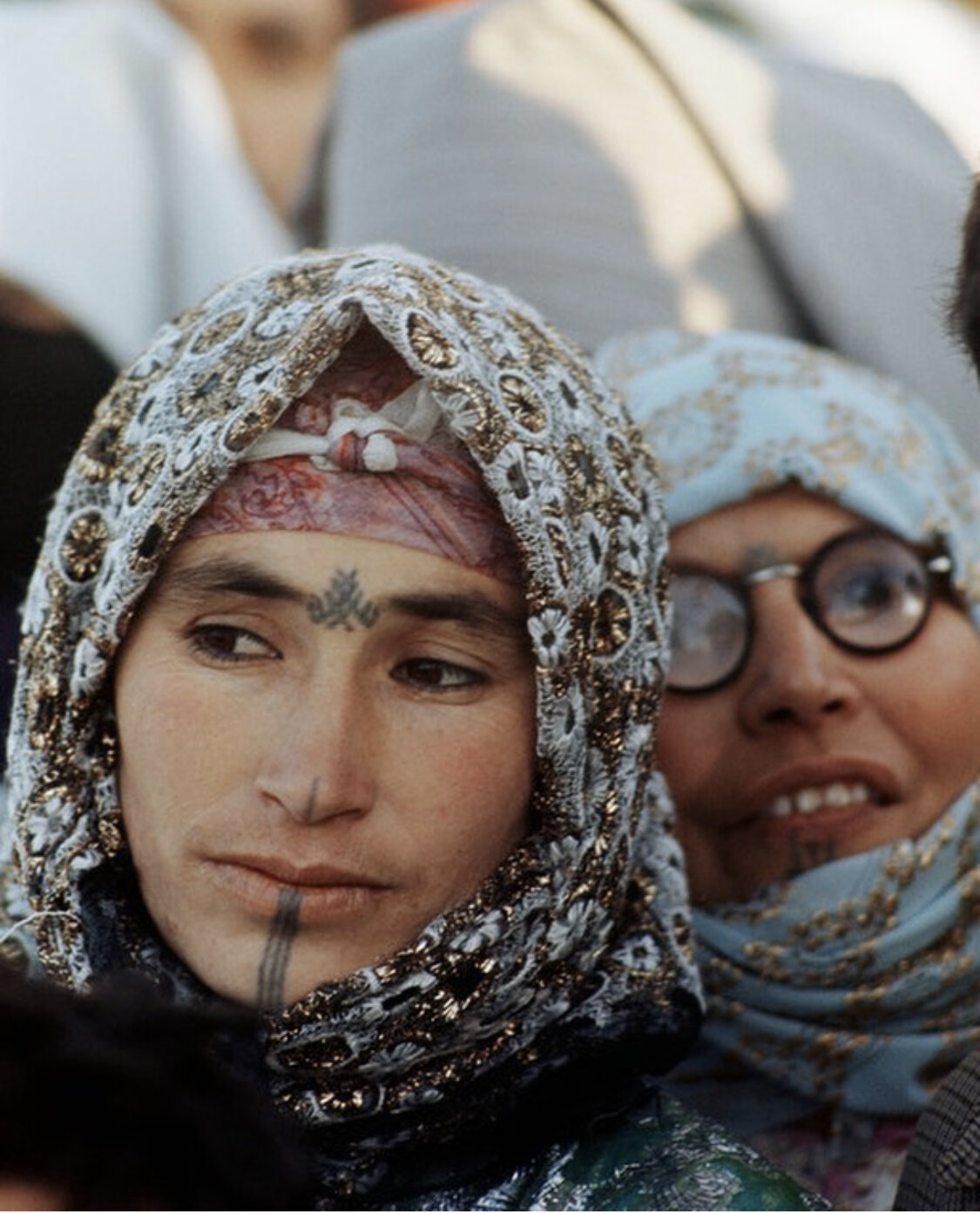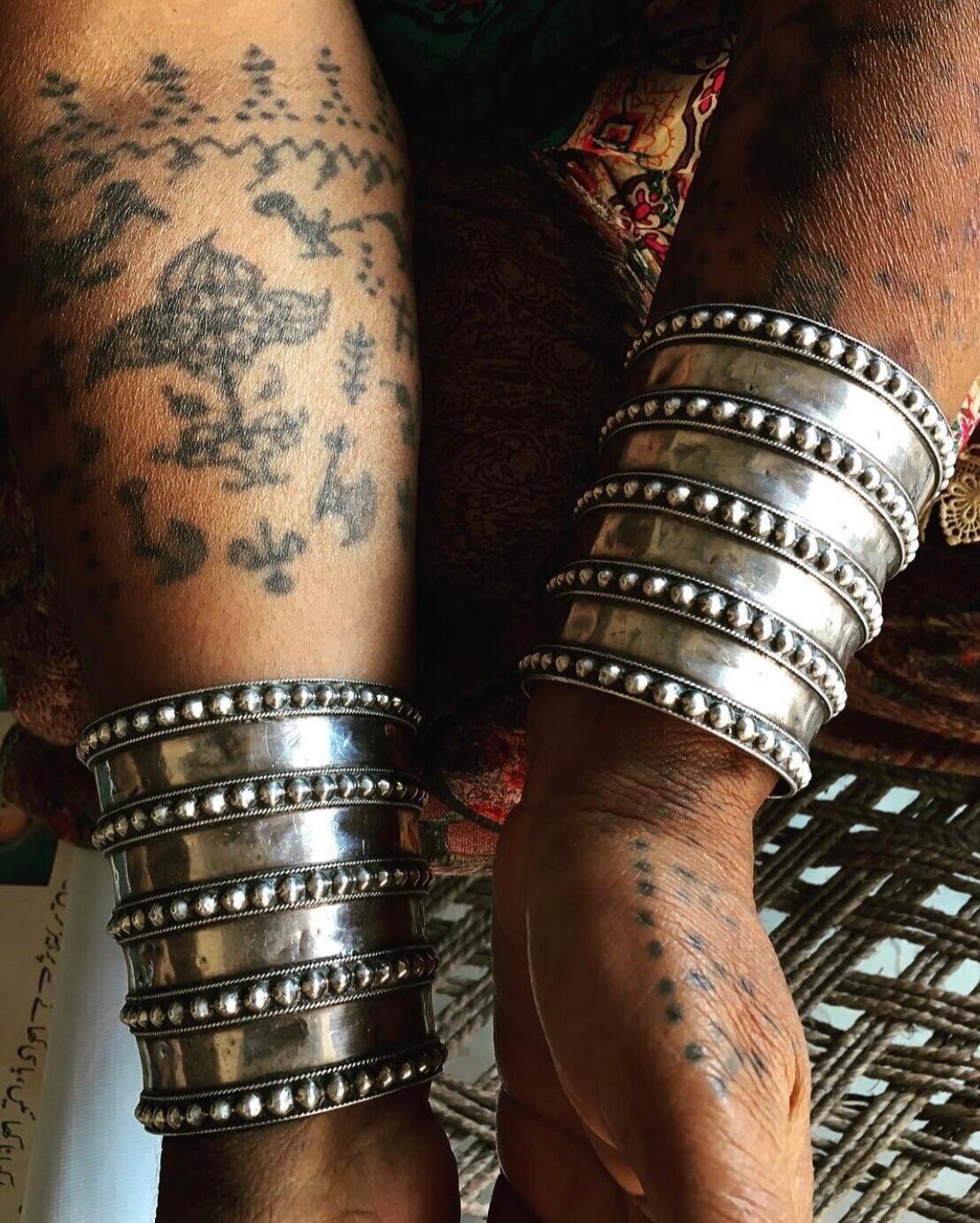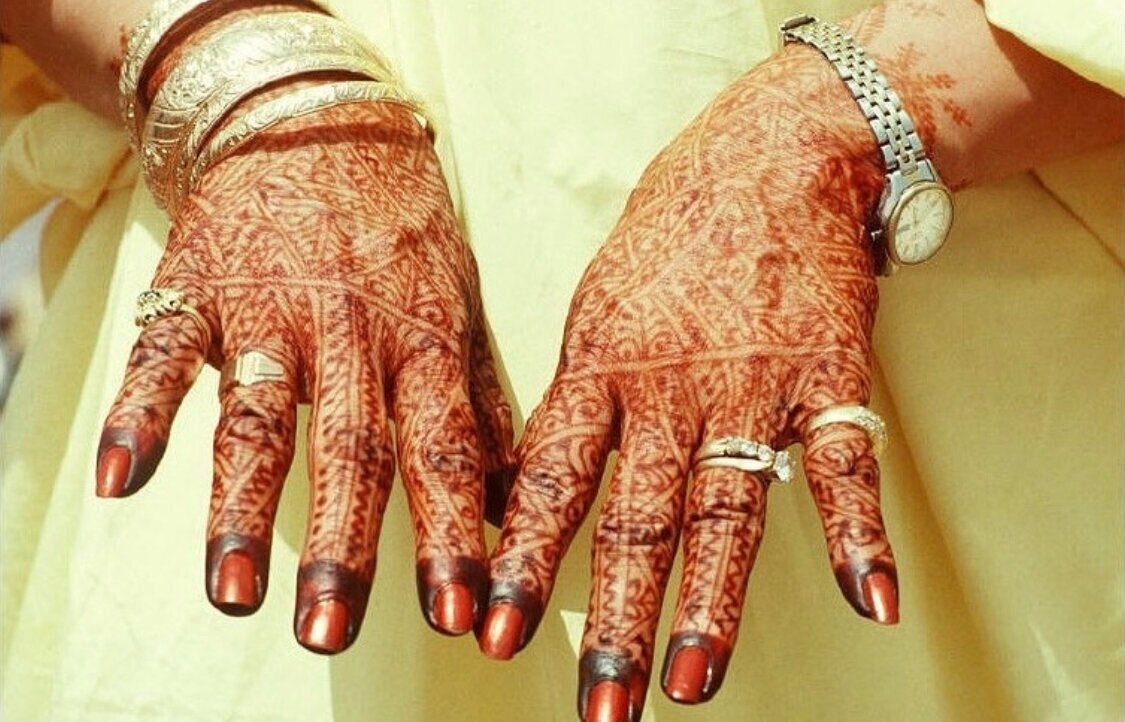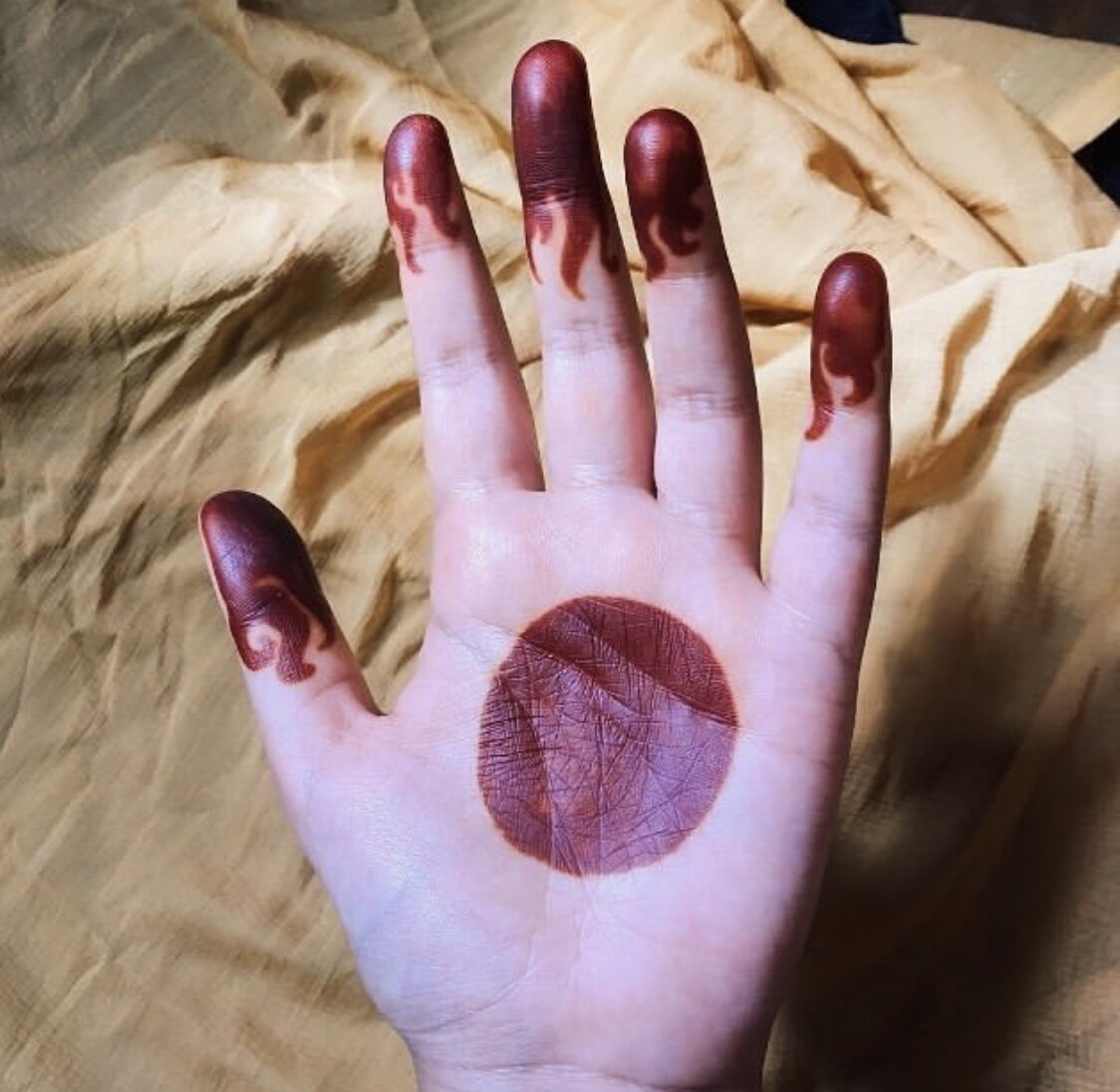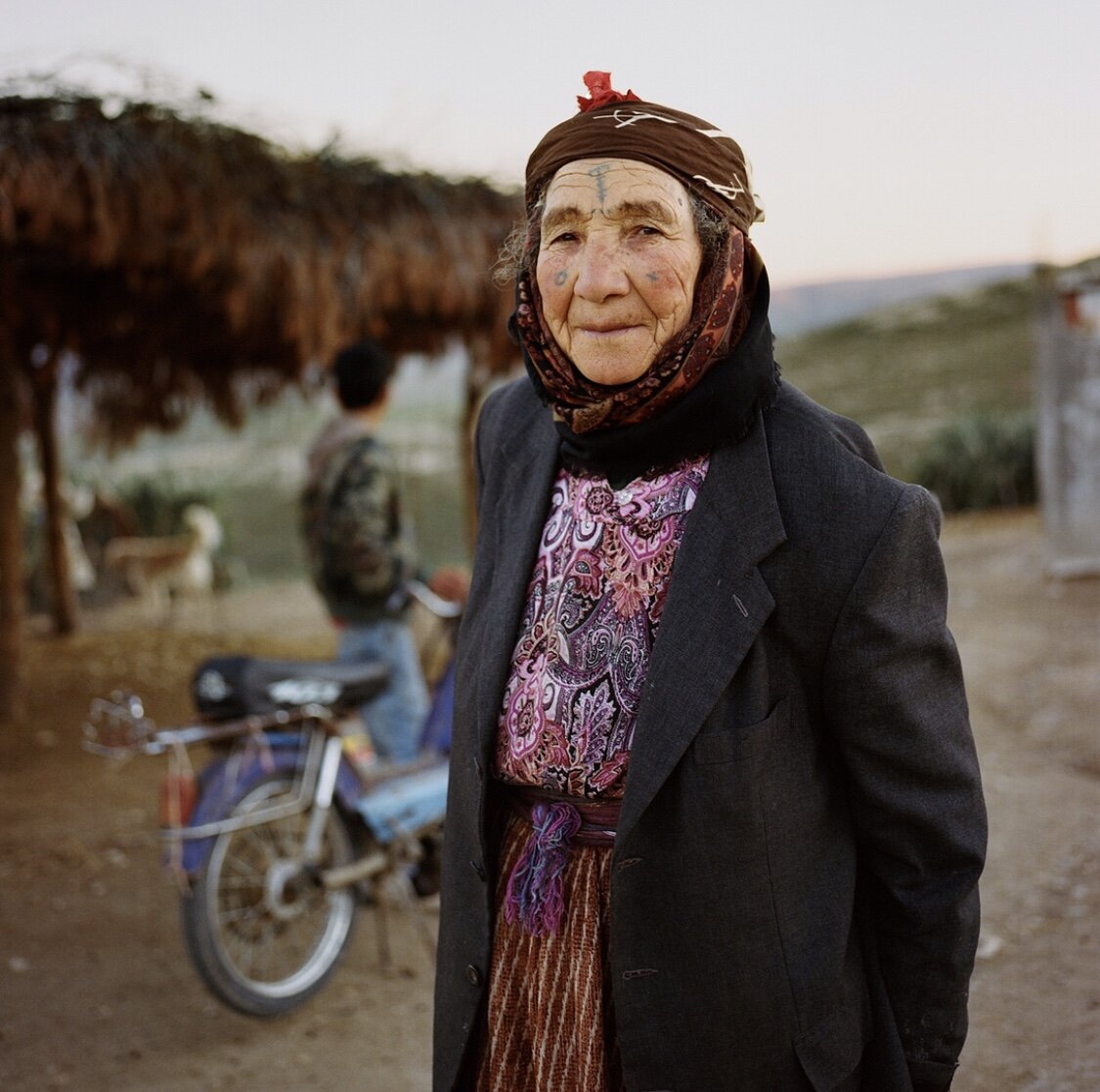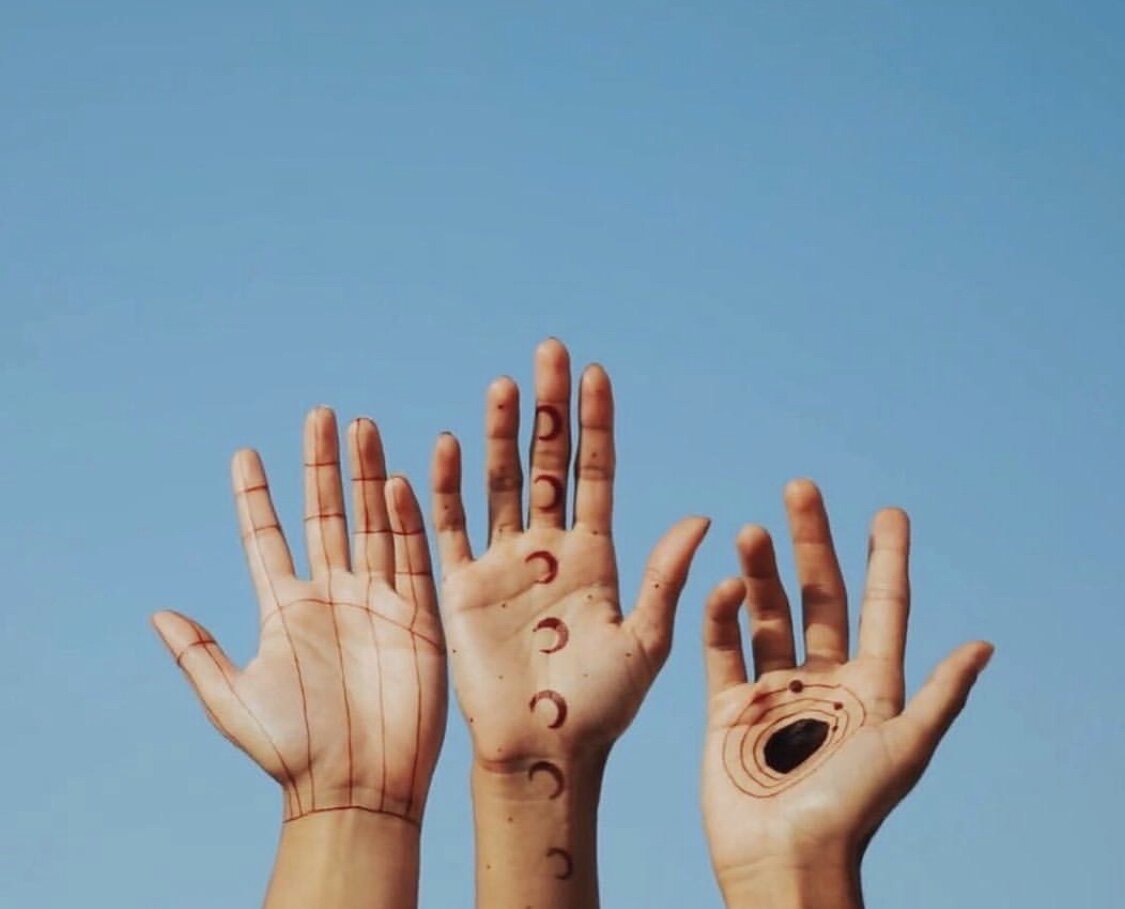The Sun, Moon, Henna + Tattoos
Image by Jameela Elfaki
Words by Sunayah Arshad and Evar Hussayni
Throughout history, people have used illustrations in the form of symbols, figures and patterns to portray stories, express themselves and communicate. The illustrations that existed were a representation of what they once knew and wanted to share. To this day, any remnants of these are constantly being sought after, with the hope of providing information about the world and why people behave the way they do. Many designs have been carried through generations, through nature, through tradition and through art. Over years, certain symbols, figures and patterns found their way onto human skin, in the form of henna and tattoos.
Henna has been a long-standing part of many cultures, with its roots commonly believed to be among the North African (NA) region. It’s the product of tradition, kept alive by generations of women throughout the Middle-Eastern (ME), African and South Asian (SA) world. Tattoos have also been a long-standing tradition of these regions, along with the Balkans.
Henna dye originates from the Lawsonia Inermis plant, which thrives in hot climates. The leaves are crushed into a powder and prepared with an acidic medium to produce Lawsone, a deep orange-red dye. Early evidence suggests that henna originated in Egypt. It’s believed that the Ancient Egyptians were huge advocates of using henna to decorate their bodies (Cleopatra too) but also to dye the hair and nails of mummies. From Egypt, the plant was seeded across the Middle East and South Asia, by birds that migrated. This resulted in the adoption and integration of henna into various settlements and cultures throughout.
Some of the earliest evidence of figurative tattoos also belonged to Egyptian mummies. Back then, tattoos were usually made by mixing soot with either a woman’s breast milk, or the liquid from a sheep or goats gallbladder. The design would then be drawn by penetrating a needle through the skin and spreading the mixture over the design. Almost all tattooing and henna designs were performed by women. In North Africa, many accounts by tattooed individuals claim they were done by Tunisian gypsy women (known as the Adasiya). Across other regions, both henna and tattoos would be done by a woman within the family, a close friend or some would even do it on themselves. Both practices were often performed to symbolise religious beliefs, status of the individual, enhance beauty and be used for medical purposes. There was also a dark side to tattooing. In some tribes, women would be marked to appear less beautiful, and therefore less likely to be seized by men from opposing tribes. On the other hand, captors would tattoo women that they’ve kidnapped, with symbols that represented belonging and their confinement into the new life forced on them.
Each region has its own spiritual or physical meaning behind both practices, and the designs used. The use of henna remained prevalent through the significant rites of passage: birth, marriage and death. Believed to have healing properties, women would apply the dye on expectant mothers and babies, to purify, strengthen and protect from the evil eye. In death, the bodies of the deceased would have henna applied, to protect them from Jinn (evil spirit) but to also appear more beautiful.
The most widely known use of henna, was, and still is, for marriage. Available to both the rich and poor, it quickly became an accustomed form of body art and an adornment for women. Within each region, a different narrative was adopted. A different story represented through different designs.
Image by Jameela Elfaki
The significance of henna in marriage is due to its association with the ability to bring luck, joy, purity and to protect fertility. In South Asia, women use henna to create mehndi - a term used to describe the art of decorating and beautifying the body with illustration. Mehndi would be applied for celebrations, mainly on brides ahead of their wedding day. The ‘mehndi night’ or ‘night of henna’ became a widely practiced tradition across the MENASA regions, as a prelude to marriage. Used as an opportunity for women to connect and celebrate with each other, away from the male gaze. A chance for them to dance, sing and enjoy the night together.
Women apply henna onto each other, using sticks, syringes and cones. In South Asia, inspirations for mehndi designs are often taken from surroundings. “South Asian designs are very floral, if you look at our saris and clothing, it’s very similar – designed with flowers, paisleys and swirls. I take a lot of my inspiration from fabrics.” Explains British-Pakistani henna artist, Isna. Designs in the Middle East and North Africa are often categorised by bold lines, geometric shapes, block colours and earth symbols, with fingertips usually solidly coloured. These designs were often reflected in the traditional tattoos seen on women, which seem to cross through all cultures and ethnic groups that practice these arts. For example, earth symbols such as the sun, moon and stars, play a huge role in the visual aspect while geometric symbols such as inverted triangles, lines and diamonds would represent femininity, womanhood and fertility. Animal designs would also be used, such as snakes, turtles and the gazelle, said to bring luck. Whilst Islam prohibits the artistic depiction of animals and humans, many groups such as the Amazigh community used geometry to portray their animistic beliefs without violating the rules of Islam.
With the expansion of literacy and the globalisation of religion, especially Islam, the long history of traditional tattooing has slowly come to fade away. Although the practice predates Islam, the Qur’an states the prohibition of harming the body, resulting in lack of interest in traditional tattooing within the Islamic societies of the Middle East, North Africa, South Asia and Balkans. In contemporary communities, you will find a revitalisation of the practice by younger generations as a way to reconnect with their roots and culture. However, the reasons behind tattooing have evolved over time and today represent a much more personal endeavour, especially in regards to visual aspects, placement, colours and quantity.
The spiritual and symbolic ideology of henna has also been somewhat lost over generations, yet the physical and illustrative use of the dye for celebrations has remained customary in most areas. Unlike tattoos, which were essentially more widespread internationally, henna lingered in the MENASA regions. It wasn’t until recently that the dye experienced a resurgence. Through an improvement in cultivation, production and through the MENASA diaspora, the use of henna has expanded. The artistic potential has been developed through innovations in packaging and application methods, such as glitter, gilding and stick-on designs.
The introduction of henna into Euro-American culture has been a recent phenomenon. During the 80’s/90’s, these countries discovered henna from colonial occupation, trade and exploration of the henna-using regions. Over the last 10 years, henna has evolved into a ‘fashionable’ adornment in the West, with many opting for a pain-free, temporary alternative to tattoos. Throughout South Asia and some Arab/North African parts, the art of applying henna became a socially accepted form of work for women. “It started off as something that wasn’t seen as important - it was just a hobby. In Pakistani culture you have to be a professional and not in the creative field. My family didn’t take it very seriously in the beginning, but as it grew and snowballed into something else, they recognised me as a professional artist,” recalls Isna.
While the use of henna and tattoos have become more mainstream in the West, younger generations of the MENASA diaspora have been inspired to reclaim their heritage. With some, including Isna, opting to practice henna art as a side job and form of release. “It’s my therapy. My day job is in an office, so this on the side is my way to release. I can zone out for hours on end. It’s amazing. It keeps me sane.”
For many young women, henna has given them an opportunity to reconnect with their roots, express themselves and visually share their culture. When asked about her clientele, Isna responds, “It used to be mainly South Asians, but now it’s across the board. I can’t imagine which clients will come to me next. We’ve got new products now and it’s opened up a whole new demographic and client base. The whole concept of henna has gone much further than its origins. At first it was purely cultural, it’s now so commercial and has blown-up which is amazing. I’m happy with the way everyone’s embraced it.” Women are now using henna to create their own innovative designs, incorporating bold, contemporary patterns and mixing traditional shapes with unconventional ones. Some even incorporate designer logos into their designs. With the growing popularity of henna, there is still a concern that the art will lose its purpose, similarly to tattoos - where it no longer symbolises something special to those cultures. Isna however, is not so convinced, “I think it’s so embedded in our culture that we can never let henna go. It will always be used for that reason. But it can also grow and become more contemporary. To this day, many people want that element of tradition, no matter how far it goes.”
Story from Issue 3 of AZEEMA
Images above by Cheb Moha, Bruno Barbey, Emmanuel Guddu, A.Abbas, Jannat Hussain, Yumna Al-Arashi, Aqib Anwar
